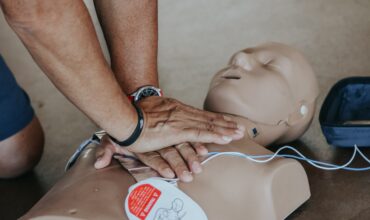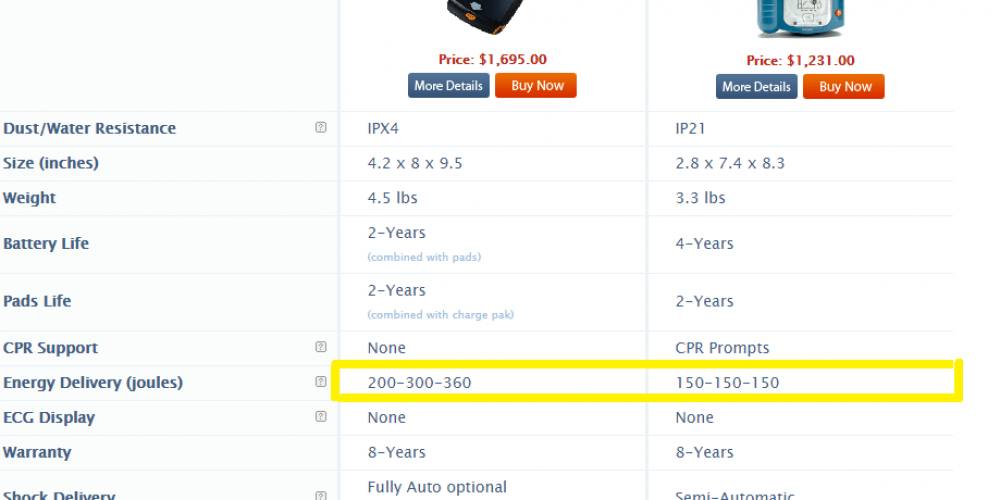- Your cart is empty
- Continue Shopping


When you bought your AED, did you compare the joules that would be delivered during a save? What are joules anyways?

Joules are the amount of energy an automated external defibrillator (AED) delivers in a life-saving shock to the heart of a victim of sudden cardiac arrest (SCA).
As you can see in the highlighted section of the image shown, I have used the AED Comparison Tool to compare two types of AEDs in order to demonstrate two types of protocols for AEDs. These two types of protocols are commonly described as: escalating and non-escalating.
An AED with escalating energy means that after the first shock is delivered, each successive shock is delivered with higher energy. Some medical professionals believe that having an AED capable of escalating its levels of energy is needed to re-shock victims who don’t respond to a first or second shock.
However, other medical professionals think that a constant flow of low energy output (or fixed output) is sufficient for defibrillation. An AED with non-escalating energy means the device will deliver the same level of energy on each shock.
Out-of-hospital studies involving all AED models have shown that a high percentage of patients who have been saved have been successfully defibrillated by the first shock, which is always 200 Joules or less. This shows that even with those AEDs offering escalating energy, because the first shock is usually successful in defibrillating the victim, the unit’s higher energy levels don’t even come into play. Studies also have shown that when subsequent shocks are needed, higher energy shocks are no more effective than repeated low energy ones (Dave Bingham, 2005).
All AEDs must receive FDA approval before they can be sold, and FDA endorses both escalating and non-escalating energy devices. The true key to increasing the likelihood of saving a life is delivering the first shock as quickly as possible. This can be done by deploying an adequate number of units in readily accessible places, ensuring that everyone knows the location of units, and training an appropriate number of people on the unit, and in CPR. Ultimately, the simpler the AED is to operate, the quicker it can be used to deliver the lifesaving shock to the patient.
If you’d like to find out what type of AED you have, give us a call at 800-580-1375. If you still have questions, you can always leave us a comment or email us at customerservice@aedbrands.com
Implementation Guide